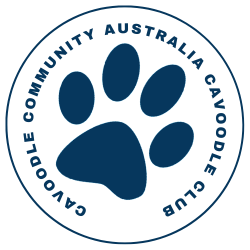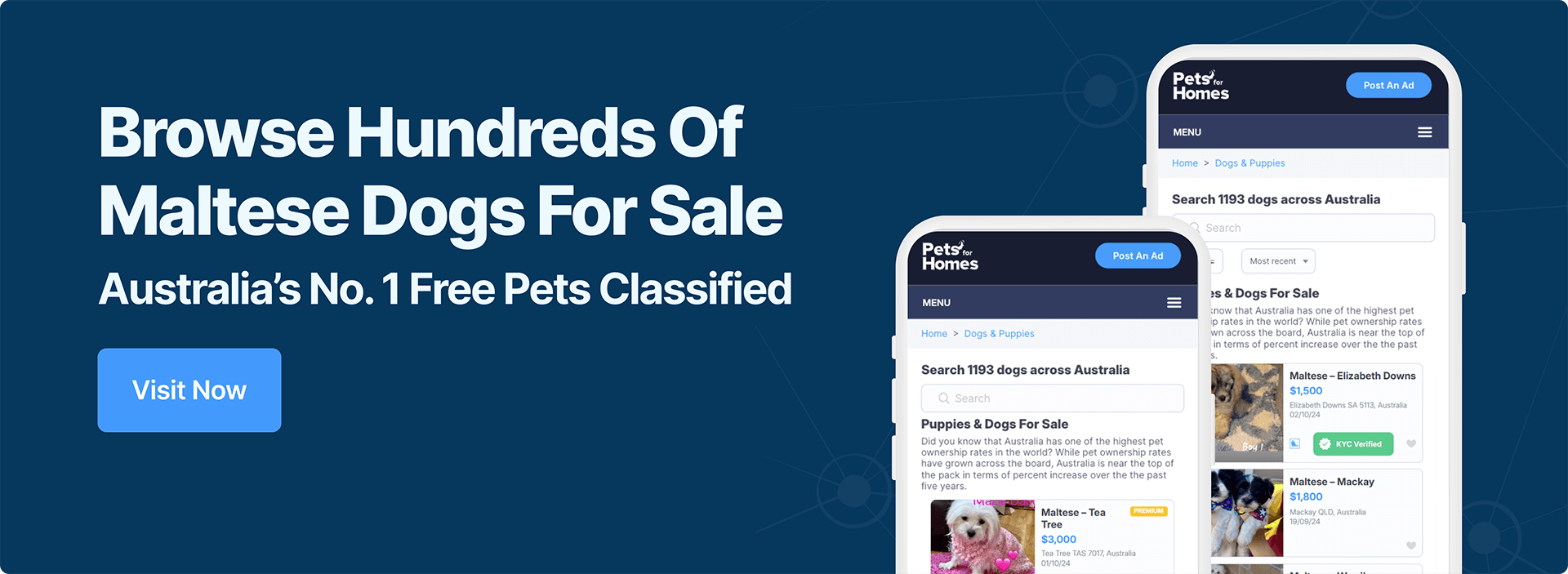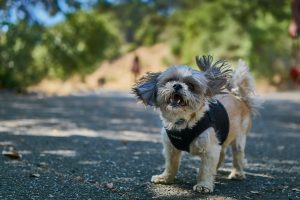Things You Need to Know Before Putting Your Dog on A Raw Diet
Posted on April 26, 2022

A growing number of adults are embracing healthier diets featuring organic and natural foods. Many now extend this lifestyle to their dogs, seeking to nourish them with raw, natural meals to promote well-being. However, veterinarians urge pet owners to weigh the benefits and dangers of feeding raw meat, particularly the threat posed by bacteria such as E. coli and Salmonella.
Here’s what you need to understand before making this decision for your pet.
A raw diet can benefit dogs, but it requires careful preparation to ensure safety. A raw dog food diet mirrors the ancestral menu of a wild canine. This approach relies on a dog’s innate carnivorous instincts—an ingrained drive to hunt and consume prey.
While specific ingredients may vary, the guiding principle remains: dogs are built to feast on meat, bones, and organs from prey animals, along with plant matter found in their stomachs.
Dogs accustomed to kibble may initially reject raw meals. They might fail to recognize the fresh meat as food since it lacks the appearance and scent of their usual diet. This adjustment can be especially challenging for older dogs conditioned to processed food over many years. Transitioning to raw feeding often demands patience and persistence.
A raw diet also brings higher costs compared to processed food. Meat spoils quickly, increasing the likelihood of waste. Feeding a large dog, such as a Malamute, can escalate expenses dramatically compared to feeding a smaller breed like a Malshi. Food expenses rank among the highest ongoing costs for pet owners, making budgeting a key factor.
The first step in crafting a safe raw diet involves selecting a trusted supplier. Choose products that clearly label ingredients, serving sizes, and nutritional content. Consult your veterinarian, who can suggest brands that align with your dog’s dietary needs.
Not every dog thrives on raw feeding. Some may reject certain foods or experience adverse reactions. If this happens, you can pivot to another type of raw food or revert to kibble. The goal is to discover a solution that keeps your dog healthy and satisfied.
Under no circumstances should you offer your dog raw table scraps. A raw diet must be meticulously prepared to meet canine nutritional requirements. Most raw food must remain frozen until use to prevent bacterial growth. Improperly stored raw food can harbor harmful bacteria, endangering your dog’s health. Some companies offer freeze-dried options that don’t require freezing, but these tend to cost more. After each meal, clean up any leftovers and dispose of them promptly to avoid contamination.
The takeaway? Partner with your veterinarian before introducing a raw diet. Some dogs have specific health conditions or sensitivities that make raw feeding unsuitable. Your vet can help determine if your dog is ready for this diet and guide you toward the safest and most effective feeding plan.
Malshi Gifts
-
 Cosy Doggy Jacket
A$31.99 - A$75.99
Cosy Doggy Jacket Wrap your furry friend in warmth and style with this snug cotton dog jacket. Designed to shield against the chill, it’s perfect for crisp autumn walks or frosty winter outings. Key Features:100% Cotton Material: Woven from soft, breathable cotton to cradle your dog in comfort while locking in warmth. Seasonal Protection: Tailored to guard against cooler temperatures, keeping your pup cosy and mobile during the colder months. Snug Fit: Shaped to hug your pet securely, ensuring comfort and ease during every adventure. Durable and Stylish: Blends practical insulation with a sleek, polished design that suits daily outings and special events alike. Product Details: Material: 100% Cotton Season: Autumn/Winter Gear up your pup with a jacket that balances comfort, durability, and charm. Whether for a brisk walk or lounging indoors, this cotton jacket is an essential companion for cooler days!
Cosy Doggy Jacket
A$31.99 - A$75.99
Cosy Doggy Jacket Wrap your furry friend in warmth and style with this snug cotton dog jacket. Designed to shield against the chill, it’s perfect for crisp autumn walks or frosty winter outings. Key Features:100% Cotton Material: Woven from soft, breathable cotton to cradle your dog in comfort while locking in warmth. Seasonal Protection: Tailored to guard against cooler temperatures, keeping your pup cosy and mobile during the colder months. Snug Fit: Shaped to hug your pet securely, ensuring comfort and ease during every adventure. Durable and Stylish: Blends practical insulation with a sleek, polished design that suits daily outings and special events alike. Product Details: Material: 100% Cotton Season: Autumn/Winter Gear up your pup with a jacket that balances comfort, durability, and charm. Whether for a brisk walk or lounging indoors, this cotton jacket is an essential companion for cooler days! -
 Mesh Pet Carrier Backpack
A$23.99 - A$35.99
Mesh Pet Carrier Backpack – Lightweight, Sturdy, and Comfortable Travel Companion for Small Pets Take your pet along wherever you roam with the Mesh Pet Carrier Backpack – a hands-free, breathable, and eye-catching way to keep your pet by your side. Whether hiking, running errands, or strolling around, this carrier blends convenience and comfort for both you and your furry companion. Key FeaturesBreathable and SturdyBuilt from high-grade polyester, the Mesh Pet Carrier Backpack endures daily wear while staying light on your shoulders. The airy mesh material channels fresh air through, keeping your pet cool and relaxed in any weather. Comfort for Pets and OwnersThe legs-out, open-top layout lets your pet nestle in while keeping them securely seated with a clear view of the world. Adjustable padded straps ease the load on your shoulders for those longer adventures, while an internal leash provides extra security. Versatile and PracticalWith fully adjustable straps, this carrier can be worn on your front or back. Quick side zips and a flexible top closure simplify loading your pet, while the robust design ensures a secure ride. Sizes and SpecificationsAvailable in various sizes and colours (Pink, Red, Blue, Black, Camouflage, and Rainbow), this carrier accommodates pets big and small: S: Chest 28-30cm, Back 25-28cm, up to 2.5kg (e.g., Chihuahua, Puppy)M: Chest 32-43cm, Back 29-34cm, 2.5-3.5kg (e.g., Hiromi, Teddy)L: Chest 36-50cm, Back 31-38cm, 3.5-6.5kg (e.g., Shih Tzu, Adult Teddy)XL: Chest 43-63cm, Back 39-43cm, 5.5-9kg Product DetailsMaterial: Polyester and breathable meshClosure: Side zips with elastic topAdjustable: Fully adjustable strapsPortable and Hands-Free: Ideal for on-the-go pet travel Why Choose the Mesh Pet Carrier Backpack?Comfort-first design with padded shoulder strapsSecure setup with an internal leashDurable and easy-to-clean for all-weather usePet-friendly design lets them relish the view and fresh airGet Ready for Shared Adventures! Enjoy boundless freedom with your pet by your side. Opt for the Mesh Pet Carrier Backpack and turn every journey into a safe, comfortable, and enjoyable outing for your furry friend.
Mesh Pet Carrier Backpack
A$23.99 - A$35.99
Mesh Pet Carrier Backpack – Lightweight, Sturdy, and Comfortable Travel Companion for Small Pets Take your pet along wherever you roam with the Mesh Pet Carrier Backpack – a hands-free, breathable, and eye-catching way to keep your pet by your side. Whether hiking, running errands, or strolling around, this carrier blends convenience and comfort for both you and your furry companion. Key FeaturesBreathable and SturdyBuilt from high-grade polyester, the Mesh Pet Carrier Backpack endures daily wear while staying light on your shoulders. The airy mesh material channels fresh air through, keeping your pet cool and relaxed in any weather. Comfort for Pets and OwnersThe legs-out, open-top layout lets your pet nestle in while keeping them securely seated with a clear view of the world. Adjustable padded straps ease the load on your shoulders for those longer adventures, while an internal leash provides extra security. Versatile and PracticalWith fully adjustable straps, this carrier can be worn on your front or back. Quick side zips and a flexible top closure simplify loading your pet, while the robust design ensures a secure ride. Sizes and SpecificationsAvailable in various sizes and colours (Pink, Red, Blue, Black, Camouflage, and Rainbow), this carrier accommodates pets big and small: S: Chest 28-30cm, Back 25-28cm, up to 2.5kg (e.g., Chihuahua, Puppy)M: Chest 32-43cm, Back 29-34cm, 2.5-3.5kg (e.g., Hiromi, Teddy)L: Chest 36-50cm, Back 31-38cm, 3.5-6.5kg (e.g., Shih Tzu, Adult Teddy)XL: Chest 43-63cm, Back 39-43cm, 5.5-9kg Product DetailsMaterial: Polyester and breathable meshClosure: Side zips with elastic topAdjustable: Fully adjustable strapsPortable and Hands-Free: Ideal for on-the-go pet travel Why Choose the Mesh Pet Carrier Backpack?Comfort-first design with padded shoulder strapsSecure setup with an internal leashDurable and easy-to-clean for all-weather usePet-friendly design lets them relish the view and fresh airGet Ready for Shared Adventures! Enjoy boundless freedom with your pet by your side. Opt for the Mesh Pet Carrier Backpack and turn every journey into a safe, comfortable, and enjoyable outing for your furry friend. -
 Breathable Carrier for Pets
A$0.99 - A$41.99
SPECIFICATIONS Material: POLYESTER Item Type: Backpacks Breed size: All Breeds Weight: 0-10KG Style: fashion Type: Dogs Pattern: Solid Applicable Dog Breed: Universal Feature: Breathable Dog Backpack: Dog Carrier Bag Pet Carrier: Dog Cat Carrier Bag cat Backpack: Pet Carriers Backpacks Dog Carrier Backpack: Bags for Dogs backpack for small dog: Dog Carrier Travel Pet Bags: dog backpacks dog bag: dog accessories Pets dogs accessories: Carrier for dogs Dog accessories: Backpack for dog pet accessories: Carrier for cat backpack for dogs cats: front carrying dog backpack Puppy Dog Travel Carrier: small dog carrier backpack dog front backpack carrier: dog backpack carrier Features 1: Outdoor Cycling Pet Backpack Features 2: Motorcycle Puppy Carrying Bag Pet Dog Carrier Backpack Puppy Carrier Front Pack for Small Medium Dogs Cat Travel Back Pack Breathable Dogs Carrier Backpack For Travel Hiking Cycling Outdoor Dogs Cats Carrier Backpack Material : Polyesterpattern : As pictures showHardness : SoftS :30*34*16cm Pet weight<=3KGM:36*45*21cm Pet weight<=6KGL :41*55*24cm Pet weight<=10KG
Breathable Carrier for Pets
A$0.99 - A$41.99
SPECIFICATIONS Material: POLYESTER Item Type: Backpacks Breed size: All Breeds Weight: 0-10KG Style: fashion Type: Dogs Pattern: Solid Applicable Dog Breed: Universal Feature: Breathable Dog Backpack: Dog Carrier Bag Pet Carrier: Dog Cat Carrier Bag cat Backpack: Pet Carriers Backpacks Dog Carrier Backpack: Bags for Dogs backpack for small dog: Dog Carrier Travel Pet Bags: dog backpacks dog bag: dog accessories Pets dogs accessories: Carrier for dogs Dog accessories: Backpack for dog pet accessories: Carrier for cat backpack for dogs cats: front carrying dog backpack Puppy Dog Travel Carrier: small dog carrier backpack dog front backpack carrier: dog backpack carrier Features 1: Outdoor Cycling Pet Backpack Features 2: Motorcycle Puppy Carrying Bag Pet Dog Carrier Backpack Puppy Carrier Front Pack for Small Medium Dogs Cat Travel Back Pack Breathable Dogs Carrier Backpack For Travel Hiking Cycling Outdoor Dogs Cats Carrier Backpack Material : Polyesterpattern : As pictures showHardness : SoftS :30*34*16cm Pet weight<=3KGM:36*45*21cm Pet weight<=6KGL :41*55*24cm Pet weight<=10KG -
 Pet Grooming Brush: Knot-Free Comb for Cats & Dogs
A$24.99 - A$27.99
Pamper your pets by using our grooming comb which is perfect for both cat and dog use. This grooming tool is made out of stainless steel and ABS and is great for detangling and getting rid of tangles, fur, and dirt on your pets’ fur, giving them a healthy and shiny coat. Key Features: V-Shaped Dense Tooth Pitch: 1 mm dense teeth reach the fur base to detangle and gently massage pet skin. Arc-Shaped Blade: As it follows the curves of your pet’s body it is more effective and less stressful to your pet. Durable Metal Teeth: The metal teeth are strong and safe, and it will not easily break; it is suitable for both short-haired and long-haired animals. One-Hand Button Operation: The TPR rubber button on the handle is designed for comfortable one-hand operation, with no stress in grooming. Why Regular Grooming Matters: Healthy Coat: Helps to eliminate the loose hair, dirt, and debris from your pet’s skin and fur making it shiny and healthy. Improved Skin Health: Massages the skin encouraging improved blood flow and distributes the sebum for a sleeker coat. Bonding Time: Builds a friendly relationship between you and your pet; besides, offers an opportunity to look for infection or injury. Prevents Hairballs: It helps minimise the hairball problem experienced, especially in cats, by first eliminating the loose hair that is easily swallowed. Size Options: Medium: Suits small to medium dogs and adult cats (15.3cm x 8.5cm). Large: Ideal for big and medium-body breeds of dogs (15.3cm x 11cm). Grooming Tips: Take your time at first and use treats to reinforce your pet’s behaviour. Gradually progress to grooming periods at least 2-3 times a week, and each session should not exceed 10 minutes to achieve the optimum outcome. Treat your pet to the grooming care it needs using this superior-quality comb, and watch it transform into a healthier one.
Pet Grooming Brush: Knot-Free Comb for Cats & Dogs
A$24.99 - A$27.99
Pamper your pets by using our grooming comb which is perfect for both cat and dog use. This grooming tool is made out of stainless steel and ABS and is great for detangling and getting rid of tangles, fur, and dirt on your pets’ fur, giving them a healthy and shiny coat. Key Features: V-Shaped Dense Tooth Pitch: 1 mm dense teeth reach the fur base to detangle and gently massage pet skin. Arc-Shaped Blade: As it follows the curves of your pet’s body it is more effective and less stressful to your pet. Durable Metal Teeth: The metal teeth are strong and safe, and it will not easily break; it is suitable for both short-haired and long-haired animals. One-Hand Button Operation: The TPR rubber button on the handle is designed for comfortable one-hand operation, with no stress in grooming. Why Regular Grooming Matters: Healthy Coat: Helps to eliminate the loose hair, dirt, and debris from your pet’s skin and fur making it shiny and healthy. Improved Skin Health: Massages the skin encouraging improved blood flow and distributes the sebum for a sleeker coat. Bonding Time: Builds a friendly relationship between you and your pet; besides, offers an opportunity to look for infection or injury. Prevents Hairballs: It helps minimise the hairball problem experienced, especially in cats, by first eliminating the loose hair that is easily swallowed. Size Options: Medium: Suits small to medium dogs and adult cats (15.3cm x 8.5cm). Large: Ideal for big and medium-body breeds of dogs (15.3cm x 11cm). Grooming Tips: Take your time at first and use treats to reinforce your pet’s behaviour. Gradually progress to grooming periods at least 2-3 times a week, and each session should not exceed 10 minutes to achieve the optimum outcome. Treat your pet to the grooming care it needs using this superior-quality comb, and watch it transform into a healthier one. -
 Pet Facial Cleaning Brush for Small Dogs
A$34.99 - A$36.99
Keep your small dog fresh, warm, and trimmed with our Pet Facial Cleaning Brush. Made for small breed dogs such as teddy, Bichon and Pomeranians, this grooming tool will clean your pet’s face gently leaving him or her fresh and clean without having to scrub off dirt. Key Features: Gentle & Effective Facial Cleaning: Designed from premium stainless steel, it is gentle to the facial skin but can easily remove dirt, tear stains, and debris on your pet’s face. This is especially suitable for around areas that one can develop build-up from food or play such as the eyes, the nose, and the mouth regions for small dogs. Ergonomic Design: It is easy to hold especially around the face of the dog due to the light weight of the brush. Its ergonomic handle means that you will be able to hold the best pet grooming clippers without tiring your hand during the grooming session. Durable & Safe: It is made from stainless steel and thus it can last for several years, even when in use, the brush retains its shape and function. These are circular shaped and this is designed to ensure that the facing area is massaged gently and thus there is no aggravation on your dog’s skin. Compact & Travel-Friendly: It being small is convenient when travelling so that the pet can be washed frequently when travelling. Here is a perfect grooming tool for any small dog whether you are at home or travelling on a holiday. Why Grooming Matters: Bathing also removes unwanted hair that forms around the eyes, face and mouth and besides ensuring your pet is neat, it also helps avoid skin diseases such as rashes, irritation and tear stains. That’s why it is one of the great elements of the grooming process for your dog. Indulge your dog in the ultimate facial grooming treatment with the Pet Facial Cleaning Brush for Small Dogs; it should be in your small dog’s grooming kit! Shop now!
Pet Facial Cleaning Brush for Small Dogs
A$34.99 - A$36.99
Keep your small dog fresh, warm, and trimmed with our Pet Facial Cleaning Brush. Made for small breed dogs such as teddy, Bichon and Pomeranians, this grooming tool will clean your pet’s face gently leaving him or her fresh and clean without having to scrub off dirt. Key Features: Gentle & Effective Facial Cleaning: Designed from premium stainless steel, it is gentle to the facial skin but can easily remove dirt, tear stains, and debris on your pet’s face. This is especially suitable for around areas that one can develop build-up from food or play such as the eyes, the nose, and the mouth regions for small dogs. Ergonomic Design: It is easy to hold especially around the face of the dog due to the light weight of the brush. Its ergonomic handle means that you will be able to hold the best pet grooming clippers without tiring your hand during the grooming session. Durable & Safe: It is made from stainless steel and thus it can last for several years, even when in use, the brush retains its shape and function. These are circular shaped and this is designed to ensure that the facing area is massaged gently and thus there is no aggravation on your dog’s skin. Compact & Travel-Friendly: It being small is convenient when travelling so that the pet can be washed frequently when travelling. Here is a perfect grooming tool for any small dog whether you are at home or travelling on a holiday. Why Grooming Matters: Bathing also removes unwanted hair that forms around the eyes, face and mouth and besides ensuring your pet is neat, it also helps avoid skin diseases such as rashes, irritation and tear stains. That’s why it is one of the great elements of the grooming process for your dog. Indulge your dog in the ultimate facial grooming treatment with the Pet Facial Cleaning Brush for Small Dogs; it should be in your small dog’s grooming kit! Shop now! -
 Interactive Rope And Suction Cup Feeder Chew
A$27.99
Interactive Rope And Suction Cup Feeder ChewEngage your dog with this versatile chew toy, crafted from safe, edible TPR rubber to promote dental health, ease anxiety, and stimulate their mind. With a strong suction cup for tug play, a treat-dispensing ball for rewarding engagement, and sturdy ropes for endless chewing, this toy is designed for heavy-duty fun. Ideal for breeds like Golden Retrievers, Labradors, German Shepherds, and more, it stands up to even the toughest chewers. Key Features: Multi-Functional Play: Combines a chew toy, treat dispenser, dental cleaner, and anxiety reliever in one. Safe & Durable Material: Made from non-toxic, edible TPR rubber, ensuring safety even if ingested accidentally. Supports Dental Health: Reduces plaque and food residue, promoting cleaner teeth and fresher breath. Hands-Free Tug Play: Suction cup design allows for interactive solo play, encouraging exercise and focus. Product Tips: Daily Dental Routine: Use for 15-20 minutes per session to help maintain oral hygiene. Supervised Play: Engage with your dog to enhance learning and ease stress. Hygiene Maintenance: Clean after each session, or thoroughly every 5-10 days for optimal freshness. Package Includes: 1 Large Dog Chew Toy with Suction Cup & Treat Dispensing Ball Make playtime a rewarding, healthy experience for your pet with this engaging chew toy! Follow PetsForHomes for exclusive deals on high-quality pet toys and accessories.
Interactive Rope And Suction Cup Feeder Chew
A$27.99
Interactive Rope And Suction Cup Feeder ChewEngage your dog with this versatile chew toy, crafted from safe, edible TPR rubber to promote dental health, ease anxiety, and stimulate their mind. With a strong suction cup for tug play, a treat-dispensing ball for rewarding engagement, and sturdy ropes for endless chewing, this toy is designed for heavy-duty fun. Ideal for breeds like Golden Retrievers, Labradors, German Shepherds, and more, it stands up to even the toughest chewers. Key Features: Multi-Functional Play: Combines a chew toy, treat dispenser, dental cleaner, and anxiety reliever in one. Safe & Durable Material: Made from non-toxic, edible TPR rubber, ensuring safety even if ingested accidentally. Supports Dental Health: Reduces plaque and food residue, promoting cleaner teeth and fresher breath. Hands-Free Tug Play: Suction cup design allows for interactive solo play, encouraging exercise and focus. Product Tips: Daily Dental Routine: Use for 15-20 minutes per session to help maintain oral hygiene. Supervised Play: Engage with your dog to enhance learning and ease stress. Hygiene Maintenance: Clean after each session, or thoroughly every 5-10 days for optimal freshness. Package Includes: 1 Large Dog Chew Toy with Suction Cup & Treat Dispensing Ball Make playtime a rewarding, healthy experience for your pet with this engaging chew toy! Follow PetsForHomes for exclusive deals on high-quality pet toys and accessories. -
 Smart Automatic Dog Feeder
A$229.99 - A$230.99
Smart Automatic Dog Feeder – 4L Stainless Steel Design Streamline your dog’s mealtime with the Smart Automatic Dog Feeder, crafted for balanced, worry-free feeding. Built from durable stainless steel, this 4L feeder allows you to customize portions and set feeding schedules, ensuring your pet enjoys fresh, reliable meals. Ideal for busy pet owners, its rechargeable design keeps your dog’s routine on track. Features: Adjustable Portion Control: Dispenses servings from 4g to 100g, letting you fine-tune portions to fit your dog’s nutritional needs. Generous 4L Capacity: Stores up to 4L of dry food, reducing the need for frequent refills and providing your dog with steady access to meals. Rugged Stainless Steel Build: Constructed from quality stainless steel for easy cleaning and long-lasting durability, keeping food fresh and hygienic. Smart Feeding Technology: Program feeding times for a dependable, controlled mealtime routine that supports healthy habits. Rechargeable Power Supply: Operates on a reliable rechargeable power source with a 110-240V range, suitable for a variety of setups. Specifications: Material: Stainless Steel Capacity: 4L Portion Range: 4g to 100g Power Source: Rechargeable Voltage: 110-240V An ideal solution for pet owners, the Smart Automatic Dog Feeder brings ease and consistency to feeding, providing a balanced, seamless approach to your dog’s nutrition.
Smart Automatic Dog Feeder
A$229.99 - A$230.99
Smart Automatic Dog Feeder – 4L Stainless Steel Design Streamline your dog’s mealtime with the Smart Automatic Dog Feeder, crafted for balanced, worry-free feeding. Built from durable stainless steel, this 4L feeder allows you to customize portions and set feeding schedules, ensuring your pet enjoys fresh, reliable meals. Ideal for busy pet owners, its rechargeable design keeps your dog’s routine on track. Features: Adjustable Portion Control: Dispenses servings from 4g to 100g, letting you fine-tune portions to fit your dog’s nutritional needs. Generous 4L Capacity: Stores up to 4L of dry food, reducing the need for frequent refills and providing your dog with steady access to meals. Rugged Stainless Steel Build: Constructed from quality stainless steel for easy cleaning and long-lasting durability, keeping food fresh and hygienic. Smart Feeding Technology: Program feeding times for a dependable, controlled mealtime routine that supports healthy habits. Rechargeable Power Supply: Operates on a reliable rechargeable power source with a 110-240V range, suitable for a variety of setups. Specifications: Material: Stainless Steel Capacity: 4L Portion Range: 4g to 100g Power Source: Rechargeable Voltage: 110-240V An ideal solution for pet owners, the Smart Automatic Dog Feeder brings ease and consistency to feeding, providing a balanced, seamless approach to your dog’s nutrition. -
 Dog Slow Feeder Bowl Anti-choking
A$42.99 - A$45.99
Dog Slow Feeder Bowl Anti-choking Transform mealtime into a balanced, safer ritual with theDog Slow Feeder Bowl Anti-choking. Designed for medium-sized dogs, this bowl features raised patterns that gently nudge your dog to eat at a slower pace, reducing choking risks and supporting smoother digestion. Forged from durable, pet-safe plastic, this feeder suits dogs who tend to gulp down their food. Features: Choke-Preventing Design: Unique ridges and raised shapes guide your dog’s eating, encouraging them to savour each bite and avoid choking. Supports Digestive Health: Slower eating helps fend off bloating and indigestion, fostering your pet’s overall wellness. Sturdy & Safe: Crafted from high-quality, non-toxic plastic that stands up to daily use while keeping your pet safe. Effortless Cleaning: Built for quick and easy cleaning, making mealtime prep and cleanup a breeze. Ideal for medium-sized dogs, this slow feeder bowl nurtures a calm, steady eating pace, helping your pet fully enjoy each satisfying meal.
Dog Slow Feeder Bowl Anti-choking
A$42.99 - A$45.99
Dog Slow Feeder Bowl Anti-choking Transform mealtime into a balanced, safer ritual with theDog Slow Feeder Bowl Anti-choking. Designed for medium-sized dogs, this bowl features raised patterns that gently nudge your dog to eat at a slower pace, reducing choking risks and supporting smoother digestion. Forged from durable, pet-safe plastic, this feeder suits dogs who tend to gulp down their food. Features: Choke-Preventing Design: Unique ridges and raised shapes guide your dog’s eating, encouraging them to savour each bite and avoid choking. Supports Digestive Health: Slower eating helps fend off bloating and indigestion, fostering your pet’s overall wellness. Sturdy & Safe: Crafted from high-quality, non-toxic plastic that stands up to daily use while keeping your pet safe. Effortless Cleaning: Built for quick and easy cleaning, making mealtime prep and cleanup a breeze. Ideal for medium-sized dogs, this slow feeder bowl nurtures a calm, steady eating pace, helping your pet fully enjoy each satisfying meal. -
 Cosy Indoor Pet House
A$47.99 - A$111.99
Pawstrip Winter Dog House – Soft, Warm, and Foldable Comfort for Dogs and Cats Wrap your pet in warmth with the Pawstrip Winter Dog House, designed to cocoon them in plush comfort through the coldest months. Crafted from plush, sponge, and PP cotton, this foldable house shields your pet with 360° wind protection, making it a cosy sanctuary. Available in multiple sizes and colours, it caters to pets of all sizes. Key Features: 360° Wind Protection: The fully enclosed design envelops your pet, blocking drafts and creating a warm, sheltered retreat. 3D Memory Sponge Support: The thick memory foam base cushions your pet while retaining its shape, even after hours of rest. Removable & Washable: With a zippered cover, cleaning and storing the bed is simple. Wash by hand or machine. Waterproof & Anti-Slip Base: The drip-plastic Oxford cloth base resists water and grips surfaces, preventing slips and wear. Available Sizes: S (35x30x30cm): Fits pets up to 1.5kg M (40x35x35cm): Fits pets up to 2.5kg L (50x40x35cm): Fits pets up to 7.5kg XL (60x45x40cm): Fits pets up to 12.5kg 2XL (75x50x50cm): Fits pets up to 22.5kg Colours: Choose from brown, grey, or green. Treat your cat or dog to this plush, wind-blocking hideaway, perfect for pets of all sizes seeking warmth and comfort.
Cosy Indoor Pet House
A$47.99 - A$111.99
Pawstrip Winter Dog House – Soft, Warm, and Foldable Comfort for Dogs and Cats Wrap your pet in warmth with the Pawstrip Winter Dog House, designed to cocoon them in plush comfort through the coldest months. Crafted from plush, sponge, and PP cotton, this foldable house shields your pet with 360° wind protection, making it a cosy sanctuary. Available in multiple sizes and colours, it caters to pets of all sizes. Key Features: 360° Wind Protection: The fully enclosed design envelops your pet, blocking drafts and creating a warm, sheltered retreat. 3D Memory Sponge Support: The thick memory foam base cushions your pet while retaining its shape, even after hours of rest. Removable & Washable: With a zippered cover, cleaning and storing the bed is simple. Wash by hand or machine. Waterproof & Anti-Slip Base: The drip-plastic Oxford cloth base resists water and grips surfaces, preventing slips and wear. Available Sizes: S (35x30x30cm): Fits pets up to 1.5kg M (40x35x35cm): Fits pets up to 2.5kg L (50x40x35cm): Fits pets up to 7.5kg XL (60x45x40cm): Fits pets up to 12.5kg 2XL (75x50x50cm): Fits pets up to 22.5kg Colours: Choose from brown, grey, or green. Treat your cat or dog to this plush, wind-blocking hideaway, perfect for pets of all sizes seeking warmth and comfort. -
 Pet ID Tag
A$29.99 - A$32.99
Ensure Your Pet’s Safety with Our Pet ID Tags Introducing our resilient zinc alloy pet ID tags, crafted to keep your furry friends secure and easily identifiable. Perfect for dogs and cats, these tags meld durability with charm, making them an essential accessory for every pet owner. Key Features: Sturdy Material: Fashioned from robust zinc alloy, these pet tags endure daily wear and tear, ensuring they remain intact through all your pet’s escapades. Customisable Design: Personalise your tag with your pet’s name and contact information using a permanent marker or engraving tool. Each tag transforms into a unique identifier for your cherished companion. Versatile Usage: These tags serve multiple purposes—attach them to your pet’s collar, repurpose them as keychains, or even utilise them as luggage tags to keep your pet’s information readily accessible in emergencies. Charming Shapes: Available in an array of delightful shapes—bone, heart, round, and star—each tag injects a playful touch to your pet’s ensemble. Specifications: Material: Zinc alloy Size: Approx. 4 sizes as depicted in pictures Colour Options: Bone, heart, round, star shapes Package Includes: 1x Dog Tag Note: Please allow for slight measurement discrepancies of 1-2 cm due to manual measuring. The actual colour of the item may vary due to different monitor settings. Claim Your Customizable Pet ID Tag Today! Thank you for considering our product. Explore our shop for more pet accessories that enhance your pet’s safety and style!
Pet ID Tag
A$29.99 - A$32.99
Ensure Your Pet’s Safety with Our Pet ID Tags Introducing our resilient zinc alloy pet ID tags, crafted to keep your furry friends secure and easily identifiable. Perfect for dogs and cats, these tags meld durability with charm, making them an essential accessory for every pet owner. Key Features: Sturdy Material: Fashioned from robust zinc alloy, these pet tags endure daily wear and tear, ensuring they remain intact through all your pet’s escapades. Customisable Design: Personalise your tag with your pet’s name and contact information using a permanent marker or engraving tool. Each tag transforms into a unique identifier for your cherished companion. Versatile Usage: These tags serve multiple purposes—attach them to your pet’s collar, repurpose them as keychains, or even utilise them as luggage tags to keep your pet’s information readily accessible in emergencies. Charming Shapes: Available in an array of delightful shapes—bone, heart, round, and star—each tag injects a playful touch to your pet’s ensemble. Specifications: Material: Zinc alloy Size: Approx. 4 sizes as depicted in pictures Colour Options: Bone, heart, round, star shapes Package Includes: 1x Dog Tag Note: Please allow for slight measurement discrepancies of 1-2 cm due to manual measuring. The actual colour of the item may vary due to different monitor settings. Claim Your Customizable Pet ID Tag Today! Thank you for considering our product. Explore our shop for more pet accessories that enhance your pet’s safety and style!






